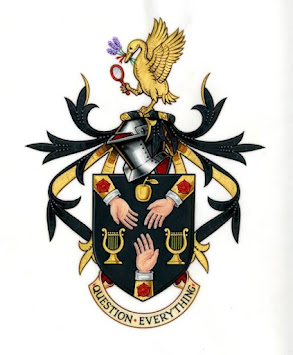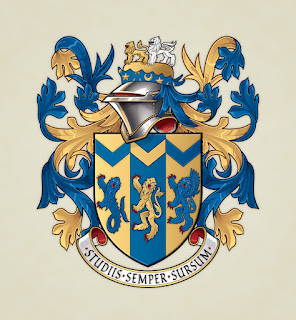The Profiles IV - Lord Lyon King of Arms
The Lord Lyon King of Arms holds a unique place in the world of heraldry, perhaps even more unique than his counterparts south of the border. Where in England, Garter and the two provincial Kings of Arms – Clarenceux and Norroy & Ulster – have powers to grant new arms, under the warrant of the Earl Marshal, in Scotland that authority lies with the Lord Lyon, delegated from the Sovereign.
That word judge is important, for the Lord Lyon holds a position as a Great Officer of State, one in which he is a judge in a criminal court, as opposed to the Court of Chivalry which is a civil court, and has rarely met in the course of its existence.
When I met with the Lord Lyon over the Christmas period I found a man who is deeply engaged in his craft and acutely aware of the responsibilities he holds. He busies himself – tirelessly, it seems – with the promotion and education of heraldry to a younger generation. He makes many appearances, from school visits to the Highland Games, in the public promotion of his office and heraldry itself. He fully understands the principle that you must be seen to be believed, and it is due to his efforts, and those of his officers of arms, that Scots heraldry is booming, with more and more young people becoming interested and involved at many levels.
The Reverend Canon Dr Joseph Morrow has been Lord Lyon King of Arms since 2014. A man of law for many years, he previously served as a commissioner and senior judge concerned with mental health in Scotland, serving on various tribunals. On learning that the office of the Lord Lyon was becoming available he was one of forty-odd people who applied for the role, despite having no experience as an officer of arms or in professional heraldry. He was one of the six interviewed, then one of one chosen for the role.
His interest in heraldry began in Church. Looking up at the various shields and achievements of arms as a boy, he became fascinated and remains fascinated with the stories they tell. “Heraldry is a science,” he says, “told through stories.”
Ecclesiastical heraldry has played a large part in his personal life and interests, being a man of faith himself. His own personal arms, which were granted in the late 90s, bear two tinctures only, and represent the ecclesiastical realm (purpure), and the law (or).
His jurisdiction extends beyond the granting of arms, for example if a clan does not have a chief, the Lord Lyon can form a convention to identify the next chief. He is solely responsible for state ceremonial in Scotland, and works closely with the Garrison Sergeant Major of Edinburgh in these matters, the most notable of which must be the installation of the Governor of Edinburgh Castle – a ceremony which will take place in 2025, following the recent retirement from military service of Major General Alastair Bruce of Crionaich, who is also Fitzalan Pursuivant Extraordinary.
Regarding the Court itself, he tells me that it is very active as a court of law. The issue, however, lies in the penalties for heraldic infringement, which are outdated and in need of reform. This, he says, is a priority for him before his retirement.
Regarding the future of heraldry, he is as positive a man as I have met on the subject, probably due to his own vibrant efforts in promoting it. “After ten years, I see a great future for heraldry in Scotland and an impact on the next generation.”
Kudos must be given to the Lord Lyon, and to his officers – some of whom have been profiled in The Herald – for their engagement and publicising their offices and roles. It is this kind of promotion and public work that will ensure heraldry thrives in Scotland as a newer generation grow up and take the helm. For example, there is currently a female officer of arms at the court, Professor Gillian Black, Carrick Pursuivant. “I want more women officers of arms,” Lord Lyon tells me, “diversity and inclusion is so important.”
Of his proudest achievement, he told me that he was proud of the role he played at the funeral of Queen Elizabeth II. He is proud of extending the reach of his office to the public, of engaging with people and bringing light to what is normally a mysterious world. He tries to engage young people in his endeavours in Scottish ceremonial life, wherever possible.
Towards the end of our conversation he told me a story about a young man called Kevin, who processed with the officers of arms at the 25th anniversary of the Scottish parliament. On meeting the King after the event, Kevin stepped forward and leaned into the King and, in a thick Scottish accent, asked: “do ye like football yer Majesty?”











Wonderful! Colourful talk like Dr. Morrow, like heraldry.
ReplyDeleteAgreed. Thanks so much for reading.
DeleteOk, I'll bite. What's that charge in the center of the chief? I was going to say, "some girl's strange hairdo," but I know that's not right.
ReplyDeleteIt is a maunch. A kind of sleeve offered to Knights.
DeleteA maunch is a popular charge in English heraldry, perhaps the Normans brought it with them across Le Manche (the sleeve).
Delete